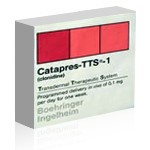Alcohol Withdrawal Syndrome: A Comprehensive Guide


Alcohol Withdrawal Syndrome (AWS) is a serious condition that can develop in individuals who have been drinking heavily for weeks, months, or years and either stop or significantly reduce their alcohol intake. The body, accustomed to regular alcohol consumption, reacts to the absence of alcohol with a range of physiological and psychological symptoms. Understanding AWS involves recognizing the progression of symptoms, the duration of the withdrawal process, and the strategies used in clinical management — including the role of medications like Catapres (clonidine).
Defining Alcohol Withdrawal Syndrome
AWS arises due to the sudden removal of alcohol, a central nervous system depressant, from the body of someone who has developed physical dependence. The nervous system, over time, compensates for alcohol’s depressive effects by increasing excitatory activity. When alcohol is withdrawn, this compensatory mechanism remains unopposed, resulting in hyperexcitability. This imbalance can cause symptoms ranging from mild anxiety to severe medical emergencies.
People experiencing AWS may initially present with restlessness, insomnia, and gastrointestinal discomfort. These signs reflect the body’s struggle to regain equilibrium in the absence of alcohol. What complicates AWS is that symptoms can rapidly intensify, leading to more severe conditions such as seizures or delirium tremens, which require urgent medical attention.
The Progression Through Stages
AWS unfolds in several phases, often depending on how long a person has been drinking and their overall health. In the early phase, occurring within six to twelve hours after cessation, symptoms such as anxiety, tremors, and sleep disturbances may emerge. These signs often reflect autonomic overactivity. Some individuals report feeling their heart race or experiencing heightened irritability and sensitivity to light and sound.
Within the next day, hallucinations may appear. These are usually visual but can also be auditory or tactile. Importantly, individuals often retain awareness that these experiences are not real, which differentiates alcoholic hallucinosis from psychotic disorders.
Seizures may develop within 24 to 48 hours. These are generalized tonic-clonic seizures and can occur in clusters. The risk increases in individuals who have undergone multiple withdrawal episodes previously.
The most dangerous stage, delirium tremens (DTs), typically occurs 48 to 72 hours after alcohol cessation. This condition is marked by confusion, disorientation, hallucinations, fever, and extreme agitation. It can also cause significant physiological instability, including high blood pressure and rapid heart rate, and is considered a medical emergency due to the risk of cardiovascular collapse and death.
Key Symptoms Without Relying on Lists
When examining the clinical presentation of AWS, some symptoms tend to be particularly characteristic. For example, individuals may experience a pervasive sense of unease and fear that can escalate into panic. Their hands might shake uncontrollably, making everyday tasks difficult. Sweating becomes profuse and unprovoked by external temperature, signaling autonomic dysfunction. Sleep is often disturbed, with individuals reporting vivid nightmares or an inability to fall asleep despite extreme fatigue. These symptoms can interact, worsening each other; lack of sleep can increase anxiety, which in turn intensifies tremors and heart palpitations.
Duration and Course of Symptoms
The course of AWS is highly individual but generally follows a recognizable pattern. Most symptoms begin within a few hours of the last drink, with peak severity occurring within the first three days. The acute phase usually resolves within five to seven days. However, some individuals may experience protracted withdrawal, where symptoms such as insomnia, fatigue, and mood disturbances persist for weeks or even months. This phase, sometimes referred to as post-acute withdrawal syndrome (PAWS), can interfere with recovery and increase the risk of relapse if not managed appropriately.
Managing AWS and the Role of Catapres (Clonidine)
Management of AWS aims to reduce the severity of symptoms and prevent serious complications like seizures and delirium tremens. Traditionally, benzodiazepines such as diazepam and lorazepam are considered first-line treatments because of their effectiveness in modulating the same neurotransmitter systems affected by alcohol.
Clonidine, known commercially as Catapres, has a more specific role. It is not used to prevent seizures or delirium tremens, but it helps control certain symptoms related to the overactive sympathetic nervous system, such as elevated blood pressure, rapid heart rate, and excessive sweating. Clonidine achieves these effects by acting on alpha-2 adrenergic receptors in the brainstem, which leads to a reduction in norepinephrine release. This diminishes the body’s "fight-or-flight" response, making the withdrawal experience more tolerable.
In clinical settings, clonidine is often used in conjunction with benzodiazepines or in cases where benzodiazepines are contraindicated, such as in individuals with a high risk of respiratory depression or those with a history of substance misuse involving sedatives. Clonidine can be administered as a tablet or via a transdermal patch, which provides a steady dose over several days. Medical supervision is essential, as clonidine can cause hypotension and bradycardia, especially when used in individuals with compromised cardiovascular function.
Unlike benzodiazepines, clonidine does not have abuse potential, which makes it an appealing adjunctive therapy in some detoxification protocols. However, its limitations must be acknowledged. Clonidine cannot replace the core treatments needed to prevent seizures or psychotic features of AWS. As a result, it functions best as a complementary medication rather than a standalone therapy.
A Holistic Approach to Treatment
The management of AWS does not end with symptom control. A comprehensive approach involves ongoing monitoring, supportive care, and transition to long-term treatment for alcohol use disorder. Nutritional support, including thiamine supplementation, is essential to prevent complications such as Wernicke’s encephalopathy, a serious brain disorder associated with alcohol misuse.
Psychological support and counseling are crucial for individuals recovering from AWS. The experience of withdrawal, especially if severe, can be traumatic. Many individuals benefit from structured environments such as inpatient detoxification programs, where they receive round-the-clock medical care and emotional support.
Following stabilization, the transition to rehabilitation services—including behavioral therapy, peer support groups, and sometimes medications like naltrexone or acamprosate—can improve long-term outcomes. Preventing relapse is a core goal, and patients should be educated about the risks of returning to alcohol use, particularly the increased risk of seizures and death associated with repeated withdrawal episodes.
Conclusion
Alcohol Withdrawal Syndrome is a medical condition that demands careful attention and timely intervention. Its manifestations can vary from mild discomfort to life-threatening complications. Understanding the pathophysiology behind AWS helps guide appropriate treatment decisions. While clonidine (Catapres) does not serve as a primary treatment for severe symptoms like seizures or delirium tremens, its ability to reduce autonomic overactivity makes it a useful part of a multifaceted treatment plan. With appropriate medical oversight and a commitment to comprehensive care, individuals can navigate the withdrawal process safely and begin the journey toward recovery.
Medically Reviewed by Dr. Mevan Nandaka Wijetunga, MD
(Updated at May 17 / 2025)

